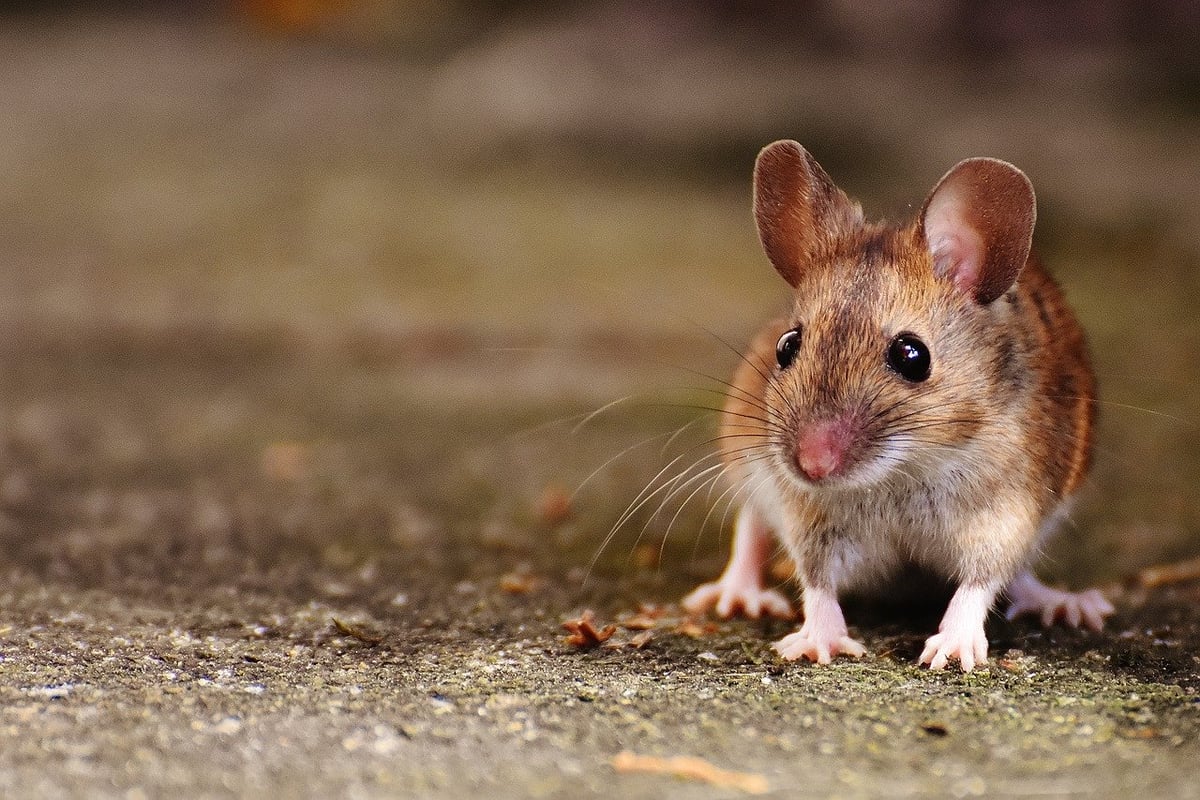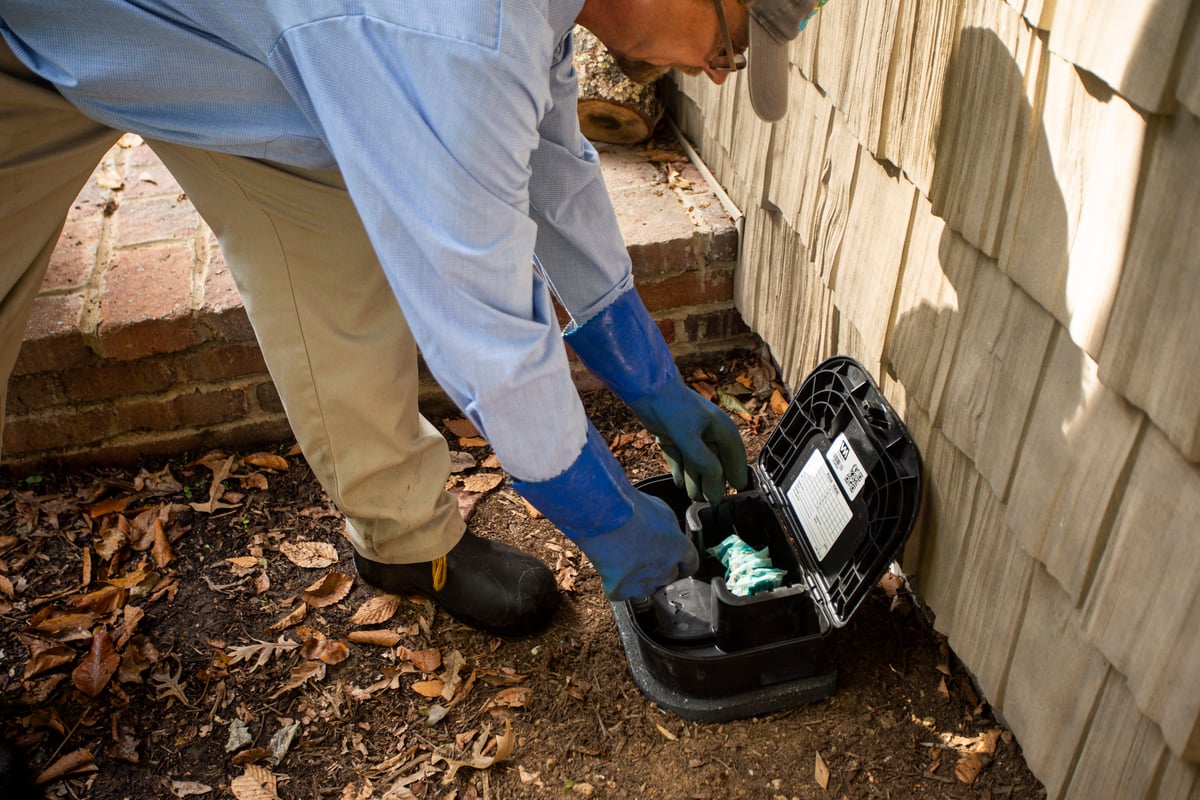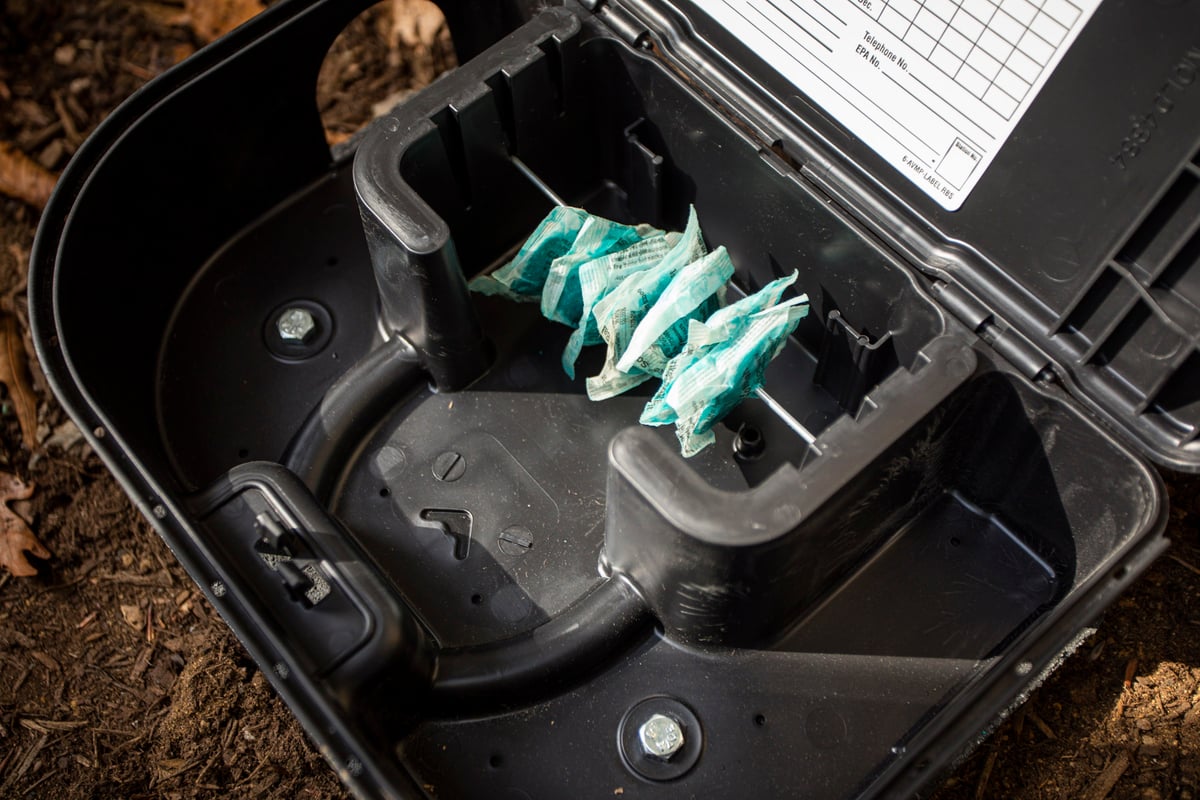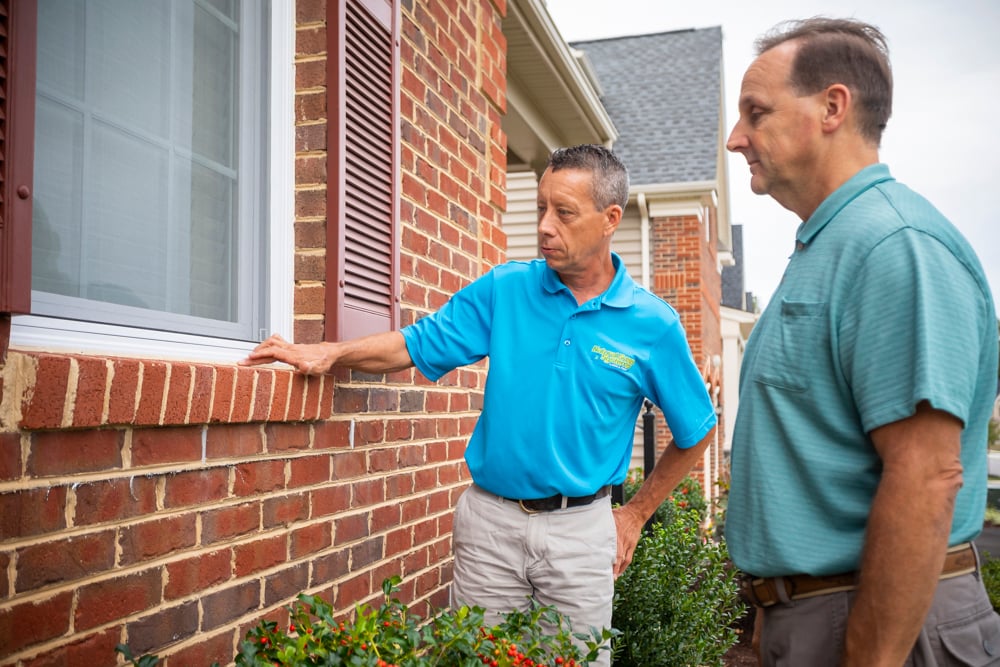How Do Rodent Bait Stations Work? Are They Safe?
When mice are lurking in and around your home, it’s not really a welcoming presence.
They are messy. They smell. They steal food crumbs. They poop everywhere. And they can even carry disease. Not cool.
They can also sneak through the smallest of holes, set up shop in hidden areas of your home, and then make lots of babies, meaning more mice making more messes in your home.
There are multiple ways to control mice, and one of them is bait stations. You may be wondering how to use rodent bait stations and if they make pet-safe bait stations.
Let’s talk about this form of rodent and mice control so you can better understand how they work in the whole strategy of eliminating these pests and keeping them away.
Mice Home Invasions 101
Before we talk about how to use rodent bait stations, let’s review some mice infestation facts. After all, knowing the enemy is half the battle.
In Maryland, mice are usually gray or light brown with white bellies. They are 2.5 to 4 inches in length with tails just as long or longer, and they have big, round ears.
 In fall and winter, mice are seeking shelter from the changing outdoor temperatures. They’re looking for warmth; security from predators; and access to food, water, and nesting materials. You can see why your home looks so attractive to them.
In fall and winter, mice are seeking shelter from the changing outdoor temperatures. They’re looking for warmth; security from predators; and access to food, water, and nesting materials. You can see why your home looks so attractive to them.
Once mice settle in, they can multiply pretty quickly. A female mouse can have 5 to 12 babies per litter, and they can do this 5 to 10 times in one year. In the worst case scenario, that’s 120 mice. Yikes!
Understanding Rodent Bait Stations
The strategies you use for control depend on whether you currently have an infestation or you’re preventing an infestation from recurring.
 Pet-safe rodent bait stations can certainly be a part of this process. Let’s learn more.
Pet-safe rodent bait stations can certainly be a part of this process. Let’s learn more.
How Do Rodent Bait Stations Work?
Pet-safe rodent bait stations are small plastic devices that are approximately 4 to 5 inches in length and square or triangular in shape.
 The lid opens and you place rodent bait inside. They make smaller ones for mice and larger ones for other rodents.
The lid opens and you place rodent bait inside. They make smaller ones for mice and larger ones for other rodents.
When you place bait stations in your garage or along your home foundation, the mouse comes along and the bait smells good and so before he finds a way in our home, he takes the bait and dies.
Are Rodent Bait Stations Safe For Pets?
Rodent bait stations are tamper-resistant. They come with a specific key that you need to open them.
 This means, pet-safe rodent bait stations can’t be opened by kids or pets accidentally. A screwdriver can’t even pry it open.
This means, pet-safe rodent bait stations can’t be opened by kids or pets accidentally. A screwdriver can’t even pry it open.
A professional exterminator will also place your rodent bait station in a manner that makes it accessible to mice but more inaccessible to pets or people.
How to Use Rodent Bait Stations in an Overall Mouse Control Strategy
If you have a current mouse infestation, rodent bait stations are not your first method of attack.
You want a quick knockdown of the current population, and that’s best done with snap traps.
 Inside, an exterminator will place snap traps to get rid of the mice in your home. He or she will place them, along with glue traps, anywhere mouse activity is happening. Then he will place bait stations outside to keep the mice from coming back inside.
Inside, an exterminator will place snap traps to get rid of the mice in your home. He or she will place them, along with glue traps, anywhere mouse activity is happening. Then he will place bait stations outside to keep the mice from coming back inside.
Your pest control professional will also find where the mice are getting in and seal those areas with copper mesh and caulk. Mice aren’t big fans of copper mesh.
Get Rid of Mice … For Good
When it comes to mice, no one wants them setting up shop in their homes.
You can keep mice out by keeping your home clean – ensuring you tidy up after spills; sweep up crumbs; and store food in glass, metal, or plastic containers with airtight lids. This is in addition to sealing up any places that you identify as potential mouse entry points.
If you find you can’t eliminate your problem and you see evidence of mouse activity, it may be time to bring in a professional pest control company. An exterminator can use snap traps, glue traps, and pet-safe bait stations – in addition to prevention measures – to ensure your mouse problem becomes a thing of the past.
If you’re looking for professional pest control in Maryland, give Natural Green Systems a call. We can tackle the problem with monthly visits for three months and then quarterly from there to ensure the mice are gone … and stay gone.
On top of that, we can also offer other pest control services -- a single source to eliminate all of your pest problems.
Ready to stop the mouse madness in your Central and Southern Maryland home? Request a free quote today. We’ll review our options together so you can make the best choice for you. Then you can sit back and enjoy your home – rodent free!
When mice are lurking in and around your home, it’s not really a welcoming presence.
They are messy. They smell. They steal food crumbs. They poop everywhere. And they can even carry disease. Not cool.
They can also sneak through the smallest of holes, set up shop in hidden areas of your home, and then make lots of babies, meaning more mice making more messes in your home.
There are multiple ways to control mice, and one of them is bait stations. You may be wondering how to use rodent bait stations and if they make pet-safe bait stations.
Let’s talk about this form of rodent and mice control so you can better understand how they work in the whole strategy of eliminating these pests and keeping them away.
Mice Home Invasions 101
Before we talk about how to use rodent bait stations, let’s review some mice infestation facts. After all, knowing the enemy is half the battle.
In Maryland, mice are usually gray or light brown with white bellies. They are 2.5 to 4 inches in length with tails just as long or longer, and they have big, round ears.
 In fall and winter, mice are seeking shelter from the changing outdoor temperatures. They’re looking for warmth; security from predators; and access to food, water, and nesting materials. You can see why your home looks so attractive to them.
In fall and winter, mice are seeking shelter from the changing outdoor temperatures. They’re looking for warmth; security from predators; and access to food, water, and nesting materials. You can see why your home looks so attractive to them.
Once mice settle in, they can multiply pretty quickly. A female mouse can have 5 to 12 babies per litter, and they can do this 5 to 10 times in one year. In the worst case scenario, that’s 120 mice. Yikes!
Understanding Rodent Bait Stations
The strategies you use for control depend on whether you currently have an infestation or you’re preventing an infestation from recurring.
 Pet-safe rodent bait stations can certainly be a part of this process. Let’s learn more.
Pet-safe rodent bait stations can certainly be a part of this process. Let’s learn more.
How Do Rodent Bait Stations Work?
Pet-safe rodent bait stations are small plastic devices that are approximately 4 to 5 inches in length and square or triangular in shape.
 The lid opens and you place rodent bait inside. They make smaller ones for mice and larger ones for other rodents.
The lid opens and you place rodent bait inside. They make smaller ones for mice and larger ones for other rodents.
When you place bait stations in your garage or along your home foundation, the mouse comes along and the bait smells good and so before he finds a way in our home, he takes the bait and dies.
Are Rodent Bait Stations Safe For Pets?
Rodent bait stations are tamper-resistant. They come with a specific key that you need to open them.
 This means, pet-safe rodent bait stations can’t be opened by kids or pets accidentally. A screwdriver can’t even pry it open.
This means, pet-safe rodent bait stations can’t be opened by kids or pets accidentally. A screwdriver can’t even pry it open.
A professional exterminator will also place your rodent bait station in a manner that makes it accessible to mice but more inaccessible to pets or people.
How to Use Rodent Bait Stations in an Overall Mouse Control Strategy
If you have a current mouse infestation, rodent bait stations are not your first method of attack.
You want a quick knockdown of the current population, and that’s best done with snap traps.
 Inside, an exterminator will place snap traps to get rid of the mice in your home. He or she will place them, along with glue traps, anywhere mouse activity is happening. Then he will place bait stations outside to keep the mice from coming back inside.
Inside, an exterminator will place snap traps to get rid of the mice in your home. He or she will place them, along with glue traps, anywhere mouse activity is happening. Then he will place bait stations outside to keep the mice from coming back inside.
Your pest control professional will also find where the mice are getting in and seal those areas with copper mesh and caulk. Mice aren’t big fans of copper mesh.
Get Rid of Mice … For Good
When it comes to mice, no one wants them setting up shop in their homes.
You can keep mice out by keeping your home clean – ensuring you tidy up after spills; sweep up crumbs; and store food in glass, metal, or plastic containers with airtight lids. This is in addition to sealing up any places that you identify as potential mouse entry points.
If you find you can’t eliminate your problem and you see evidence of mouse activity, it may be time to bring in a professional pest control company. An exterminator can use snap traps, glue traps, and pet-safe bait stations – in addition to prevention measures – to ensure your mouse problem becomes a thing of the past.
If you’re looking for professional pest control in Maryland, give Natural Green Systems a call. We can tackle the problem with monthly visits for three months and then quarterly from there to ensure the mice are gone … and stay gone.
On top of that, we can also offer other pest control services -- a single source to eliminate all of your pest problems.
Ready to stop the mouse madness in your Central and Southern Maryland home? Request a free quote today. We’ll review our options together so you can make the best choice for you. Then you can sit back and enjoy your home – rodent free!
Share This
Topics: Pest Control


